Samsung QN900D is undoubtedly the top model for 2024. This television is equipped with Mini LED technology, which provides excellent picture quality – deep blacks and high brightness make films and high-definition content look fantastic. During dynamic scenes in movies, colours and details were exceptionally well presented – especially after calibration. HDR also does not disappoint – bright elements have an excellent level of detail, and the colours are vibrant and natural. One of the strongest points of QN900D is motion smoothness. Supporting a refresh rate of 240 Hz at 4K resolution is rare on the market. Dynamic scenes in sports or games look incredibly smooth, without a trace of blurring. However, it should be added that only users of advanced PCs will fully utilise the capabilities of this feature. An input lag of 9 ms additionally ensures very responsive gameplay, which will certainly please gamers. Tizen operates smoothly and provides access to all popular applications, such as Netflix, YouTube, and Disney+. Moreover, SmartThings features and support for AirPlay allow easy connection of the television with other devices in the home. This is a great solution if you care about comfortably controlling your smart home. An additional perk is Ambient Mode – the television can blend into the décor of the living room by displaying decorative graphics. QN900D not only works well but also looks great. Slim bezels, a central stand, and the One Connect module that allows for cable concealment make the television look elegant. If aesthetics matter to us, it will be hard to find something better. As befits a flagship model, QN900D is simply expensive. Unfortunately, the lack of agreement between Samsung and Dolby Vision may still be a significant downside, especially when watching content on platforms that utilise this format. In the most demanding HDR scenes, it also happens that the contrast is not as perfect as we might expect. And what about 8K resolution? For now, it is difficult to find content that fully utilises it, unless we are enthusiasts for future technology. Samsung QN900D is certainly a television for those who are looking for a top-tier device and are willing to pay for it. However, if we are looking for similar quality at a considerably lower price, it is worth mentioning the equally good QN95D – it offers similar picture quality, without the 8K resolution, which is still more of a curiosity than a standard.
- Matching (Score)
- Our verdict
- TV appearance
- Where to buy
- Contrast and black detail
- HDR effect quality
- Factory color reproduction
- Color reproduction after calibration
- Smoothness of tonal transitions
- Image scaling and smoothness of tonal transitions
- Blur and motion smoothness
- Console compatibility and gaming features
- Input lag
- Compatibility with PC
- Viewing angles
- TV efficiency during daytime
- Details about the matrix
- TV features
- Apps
- Playing files from USB
- Sound
Samsung QN900D Neo QLED 8K vs LG OLED G5
Direct compare
QN900D / Neo QLED / Excellence Line
G54 / G51 / G55 / LW / LS

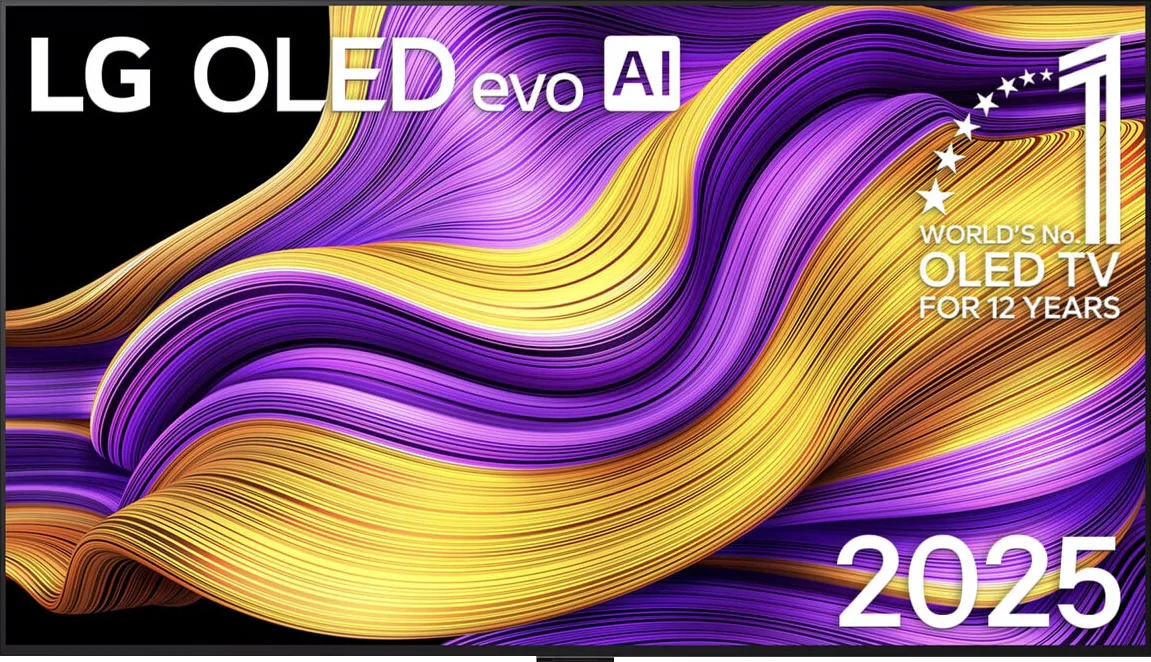
Panel type: LCD VA (wide viewing angle)
Resolution: 7680x4320
System: Tizen
Model year: 2024
Complete the survey to find out the result

Panel type: WRGB OLED
Resolution: 3840x2160
System: WebOS
Model year: 2025
Complete the survey to find out the result

Overall rating
7.5
8.9
Movies and series in UHD quality
7.6
9.2
Classic TV, YouTube
7.8
9.2
Sports broadcasts (TV and apps)
7.6
9.0
Gaming on console
9.0
9.6
TV as a computer monitor
8.0
8.8
Watching in bright light
5.0
8.0
Utility functions
7.4
8.5
Apps
8.7
9.1
Sound quality
7.4
8.7
Complete the survey to find out what fits your preferences
Advantages
Great contrast and blacks
High brightness - good HDR effect
The smoothest television in the world - 4K@240Hz
Excellent for gaming - low input lag, many features for gamers
Good digital processing - handles low-quality material well
Advanced operating system - Tizen
Great design - super slim, OneConnect, "floating" central stand
Amazing black and contrast
Reference colour reproduction after calibration
Very high brightness in HDR materials
Excellent collaboration with consoles and computers
Great motion smoothness - OLED panel 165Hz
Many features for gamers: VRR, ALLM, HGIG, low input lag
Great operating system WebOS with many applications
Superb control thanks to the Magic remote with "pointer" function
Disadvantages
Price
No Dolby Vision
No support for DTS audio format
Worse (though still good) viewing angles than its predecessor G4
Different versions of the remote in derivative models – it's hard to predict which version we will get
Our verdict
The LG G5 is a television that not only continues but also enhances what we loved about the previous models in the G series. Instead of following the beaten path, LG opted for a new Tandem OLED panel – and it was a resounding success. Brightness? Simply, PH E N O M E N A L. HDR effect? Close to reference. Colours after calibration? Almost perfect. Motion fluidity, low latency, and features for gamers? At an absolutely top level. The G5 performs well both in films and games, day and night, with a decoder, console, PC, or even just the remote. Of course – it is not a product without flaws. It’s a shame there is no support for DTS, viewing angles have worsened compared to its predecessor, and the remote may vary depending on the version. However, when we look at the overall picture, it is hard not to feel that this is one of the best OLED televisions available on the market, and perhaps the best. Certainly, when it comes to its versatility and image quality without having to reach for the extremely expensive models of the competition. If you are looking for a television for everything – cinema, gaming, bright living rooms, watching online content or connecting a computer – the LG G5 is a device that simply delivers on every front without compromises.
TV appearance





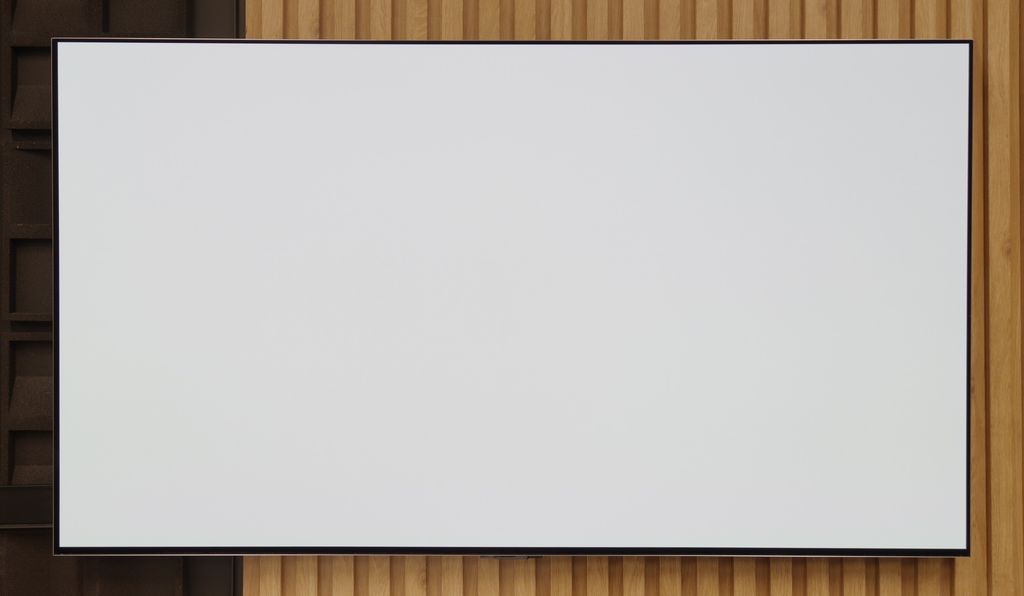
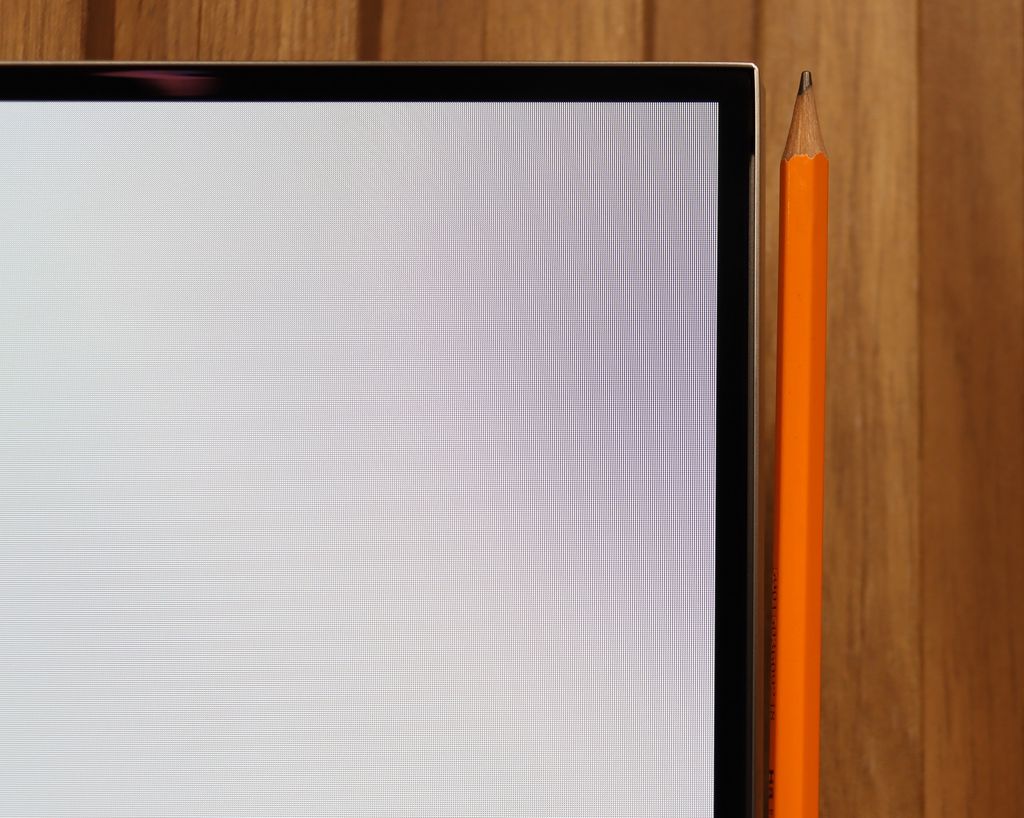
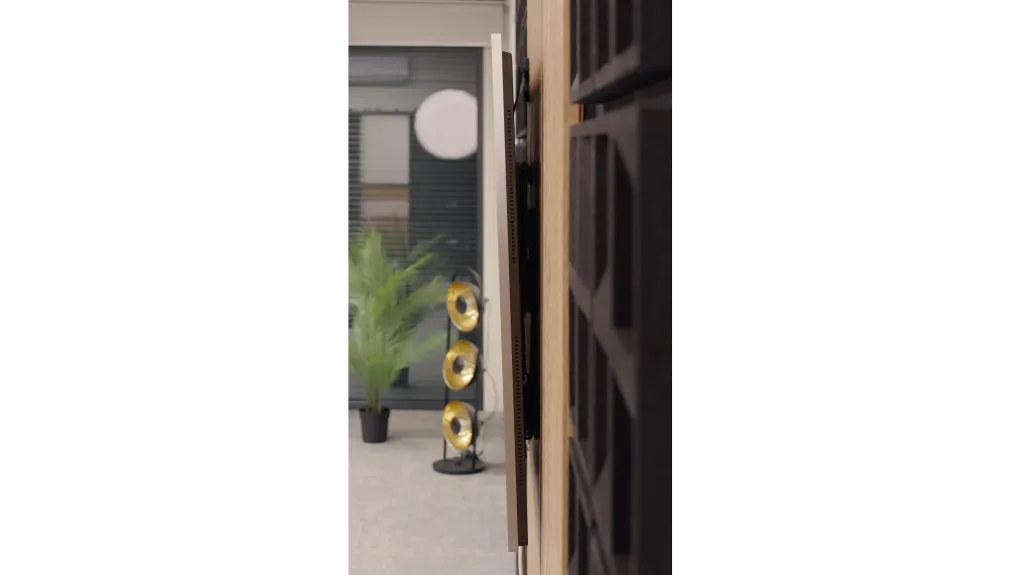
Contrast and black detail
8/10
10/10
Local dimming function: Yes, number of zones: 1344 (56 x 24)
Contrast:

Result
∞:1

Result
205,000:1

Result
89,000:1

Result
7,800:1

Result
4,000:1

Result
∞:1

Result
∞:1

Result
∞:1

Result
∞:1

Result
∞:1
Halo effect and black detail visibility:

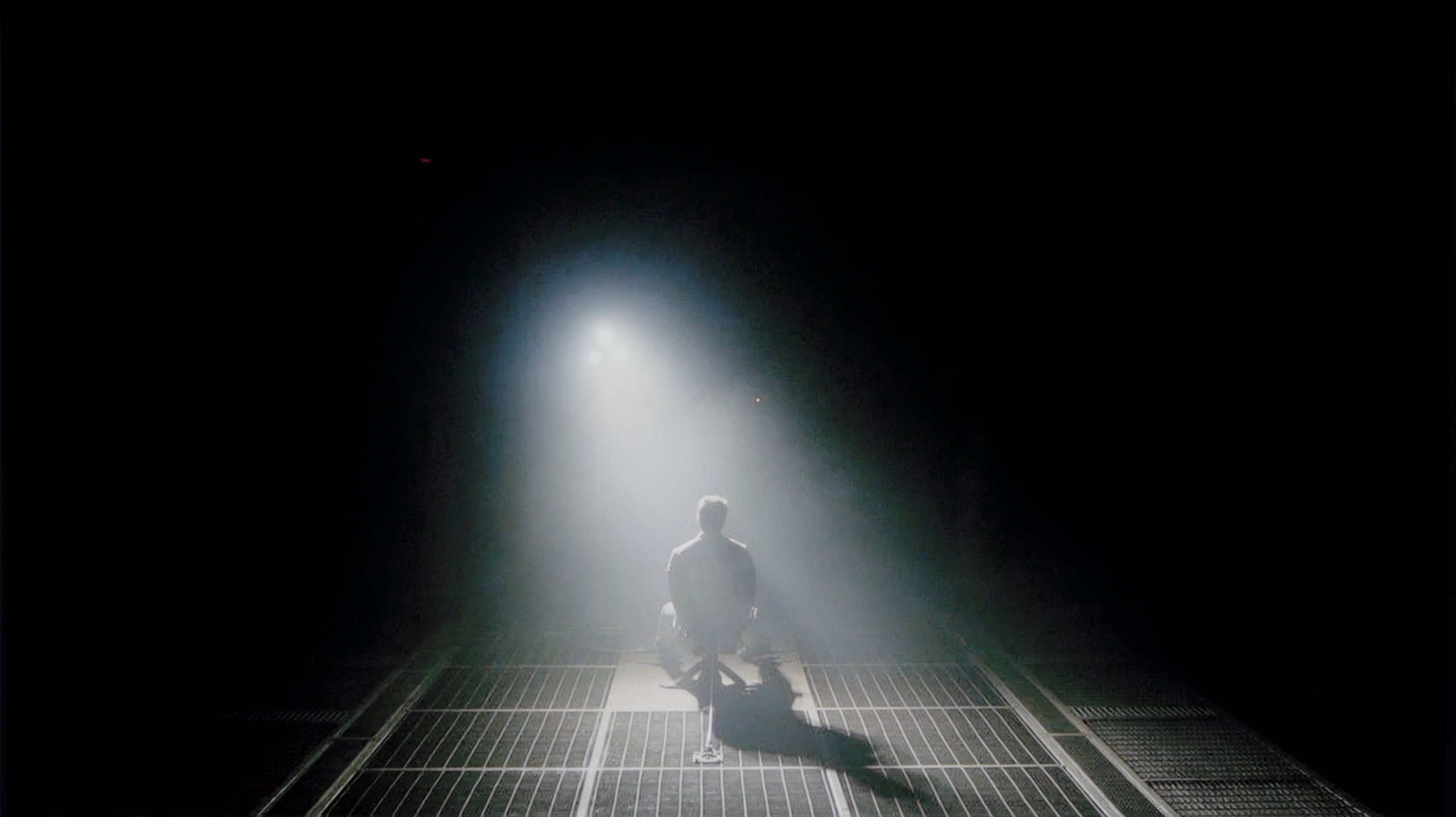
As befits the top model in the series, the Samsung QN900D television is equipped with a VA panel, which in the 65-inch version offers an impressive number of zones – as many as 1344. It is worth noting that larger sizes of this television have an even greater number of zones, which naturally translates to better contrast. During tests in scenes from the film "Oblivion," the QN900D performs excellently. Contrast values close to infinity are truly impressive, allowing for bold comparisons between this television and OLEDs. Unfortunately, like every LCD television, this model also has its limitations. In the case of very small elements, certain inaccuracies are visible, such as halo effects (e.g., in the film "Sicario 2") and occasionally significant dimming of the screen (e.g., in scenes from the film "Gravity"). Despite these imperfections, the Samsung QN900D is undoubtedly one of the best LED televisions available on the market, capable of generating very high contrast.
LG G5, as befits an OLED television, impresses with its quality of contrast and blackness. In scenes with a lot of dark areas, the screen looks almost perfect, offering deep, absolute black and infinite contrast – an effect that still cannot be achieved on any LCD television. The new Tandem OLED panel does not introduce any negative changes compared to previous generations – blacks are flawless regardless of the content. Watching scenes from films like The Revenant or Oblivion, the excellent separation of lights is clearly visible, without any halo effect or brightening of dark areas. In this category, the LG G5 deserves the highest rating.
HDR effect quality
6.6/10
9.1/10
Luminance measurements in HDR:

Result
1447 nit

Result
665 nit

Result
907 nit

Result
432 nit

Result
793 nit

Result
2346 nit

Result
2353 nit

Result
2399 nit

Result
2353 nit

Result
2012 nit
Scene from the movie “Pan” (about 2800 nits)


Scene from the movie “Billy Lynn” (about 1100 nits)


Static HDR10


Dynamic: HDR10+
Dynamic: Dolby Vision


HDR luminance chart:
LG OLED G5
Luminancja HDR
Luminance of RGB colors
Samsung QN900D Neo QLED 8K
Luminancja HDR
Luminance of RGB colors
The Samsung QN900D television demonstrates its high capabilities in light production in synthetic tests without any issues – 1400 nits is truly an impressive figure. It also showcased these capabilities in the first scene from the film "Life of Pi," where we see a brilliant burst of the rising sun. However, due to problems with the dimming algorithm, some issues can be noticed here. In the test scenes from "Sicario 2" and the second scene from "Life of Pi," these values are no longer as high and amount to around 500-600 nits. While this may not be the worst result among Mini LED televisions, one could expect more given the price of the television. Nonetheless, the television deserves praise for covering a wide colour gamut of DCP P3 at 96%. Although there are technologies offering higher values, this result is still satisfactory.
LG G5 with the new Tandem OLED matrix brings the biggest change in terms of the brightness of the television. And it's substantial. This is truly an astronomically bright OLED. In every scene tested – whether it was point lights or full-screen whites from the film The Meg – the brightness on the G5 exceeded 2000 nits. Just a year ago, such values on an OLED were simply unimaginable. And here we are – the G5 is approaching, and at times even surpassing, the best Mini-LEDs on the market. A new feature of the Tandem OLED matrix is also the expanded colour gamut – and here the LG G5 performs almost perfectly. DCI-P3 reaches a full 100%, and BT.2020 is maintained at around 83%. These are some of the highest values currently available on the market – it's hard to find any other television that comes close to such results, unless we are talking about the best displays with QD-OLED panels. The G5 has nearly reference-quality HDR – both in terms of brightness and colour saturation. This is an OLED that can truly shine – and not just figuratively.
Factory color reproduction
6.6/10
7.8/10


Factory Mode
After calibration


Factory Mode
After calibration
The television QN900D offers a Filmmaker mode that has been created with the intention of watching films in the most natural way possible, however, this mode is not without certain flaws. For HD content, the white balance shows a dominance of red and blue colours, causing the image to take on pink hues. In contrast, for 4K HDR content, the situation is the opposite – the decrease in blue and red levels warms up scenes and shifts colours towards yellow tones. This is confirmed by Color Checker tests, which clearly show that colour samples are veering in this direction.
As for brightness and the associated contrast, the gamma is significantly impaired. The biggest issue is a noticeable jump at the beginning of the graph, which indicates that dark details are excessively brightened, resulting in a loss of depth in the darkest areas of the image – this is due to local dimming. For 4K HDR materials, the EOTF curve looks quite good, however, it remains below the reference level, impacting the overall dynamics of the image.
Our test unit, the LG G5, struggled with certain issues in the factory Filmmaker mode. And although most people might have found the picture acceptable, we knew that this television was capable of much more. This mode had a clear excess of blue tint in the white balance, resulting in a significantly cooled image – particularly in HDR modes, where there was additionally a lack of red. The picture appeared cold, and its sharpness was artificially boosted and unnatural. Another significant issue was the brightness characteristics. In SDR content, the situation wasn't the worst, aside from a slight dimming of the entire image. However, it performed much worse in HDR materials – due to improper brightness management, the smallest details could completely disappear from the image, while larger, bright elements looked overexposed and lacking in gradation. Fortunately, the G5 supports calibration using 3D LUT (a tool for professionals for colour calibration), so we decided to make use of its professional capabilities and see what it could really do. Because although it wasn't tragic even before calibration, the potential of this television definitely deserved more.
Color reproduction after calibration
8/10
9.8/10




After calibration, the Filmmaker mode can indeed be called worthy of its name. The white balance for both HD and 4K HDR content has been significantly improved, making colours more natural and consistent. The image has gained in realism, and pink hues in HD content have been effectively eliminated, as has the yellowish glow in 4K HDR content. Thanks to calibration, the television now offers much better colour reproduction, positively affecting the viewing experience.
As for brightness, the situation with gamma is now quite the opposite – at the beginning of the graph, there is a noticeable drop, making the darkest details harder to discern. The EOTF curve for 4K HDR content has remained largely unchanged and is still below the reference level, meaning the television still struggles to maintain proper brightness. This is related to the aggressive dimming algorithm that affects the overall brightness of the image. You can see how the television fights to maintain high brightness or perfect black.
Despite the limitations associated with local dimming, the Samsung QN900D has improved colour reproduction quality, as confirmed by the Color Checker test results – the colour samples are now much closer to the targets, making the image more natural and pleasing to the eye.
After performing the calibration process using professional tools, we can confidently state that the LG G5 offers nearly reference-quality image. Most of the errors related to white balance and the ColorChecker test are below a value of 2, which is a phenomenal result, practically imperceptible to the human eye. And while one could still nitpick that in HDR films the television still has a tendency to slightly dim the smallest elements of the image, in practice this does not negatively affect the overall impression. Kudos to LG, as once again they provide the user with enormous possibilities for adjusting their display – and this, combined with the very good parameters of the panel itself, results in an image that is truly hard to beat.
Smoothness of tonal transitions
8/10
8.5/10












The Samsung QN900D television handles tonal transitions smoothly, deserving a rating of 8/10. Colour gradation is generally good, although not perfect – in darker scenes, certain imperfections may be noticeable to more demanding users. Despite these minor flaws, the effect should satisfy most viewers, providing natural transitions.
The fluidity of tonal transitions in the LG G5 is a notable step forward compared to last year's model. Not only has brightness been improved, but also the method of blending colours, which the G4 sometimes struggled with. In the vast majority of scenes, the G5 has no issues with tonal transitions – there is no visible banding typical of WOLED technology, nor are there unsightly breaks between colours. Of course, in very dark areas of the image and with shades of grey, minor imperfections can still be noticed, but these are things that the average viewer would not even register. In short – it is really good.
Image scaling and smoothness of tonal transitions
7/10
8.7/10
Smooth transition function

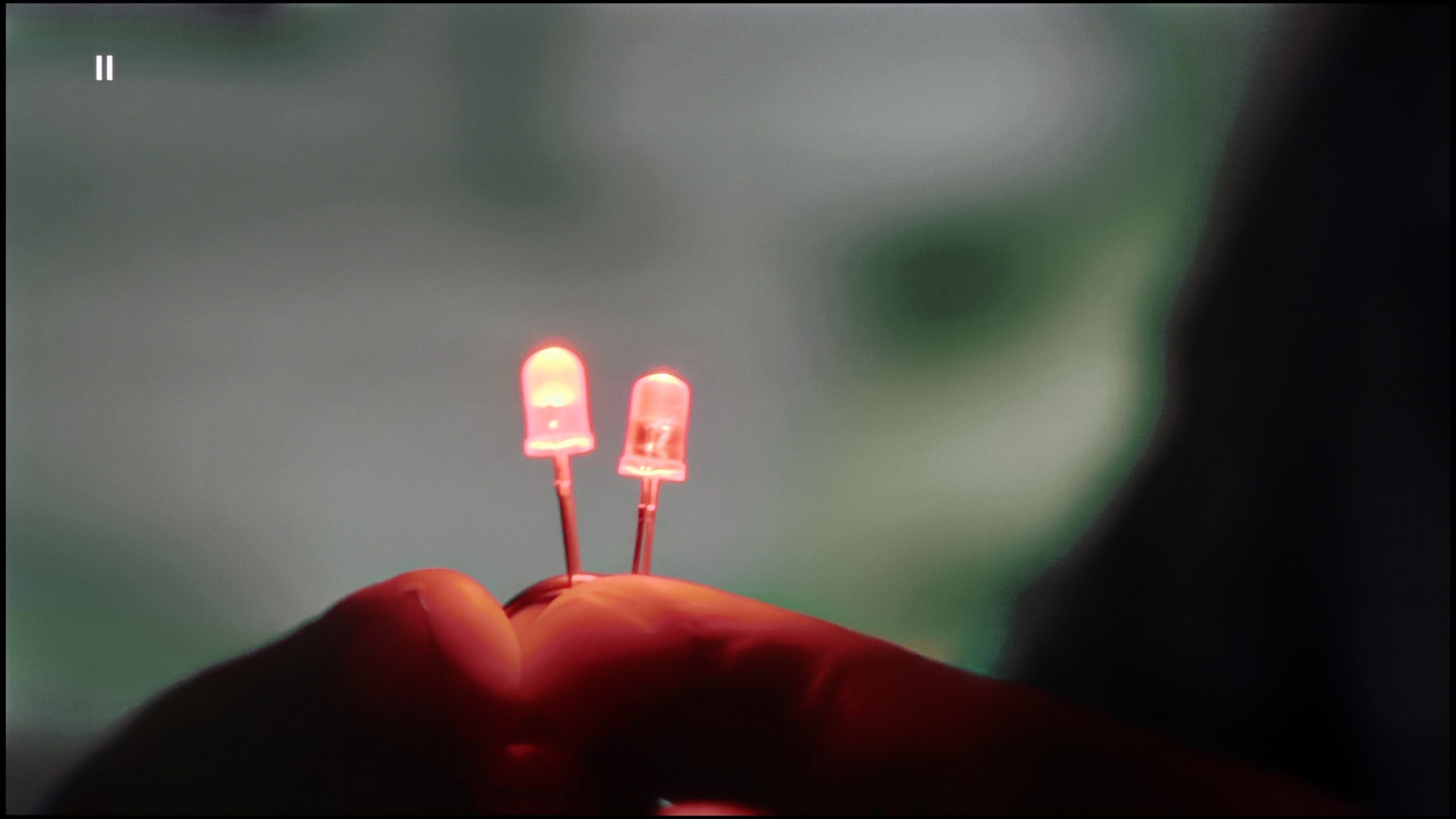
Image without overscan on the SD signal


The fluidity of tonal transitions in lower-quality materials is impressive – the Noise Reduction feature effectively smooths tonal transitions while eliminating film grain. Although the removal of grain is not always desirable, the overall final effect looks very aesthetically pleasing, particularly for those who prefer a cleaner image.
When it comes to upscaling, or image scaling, QN900D shows the enormous potential of the new processor with AI technology. Images and materials in lower resolution are upscaled while preserving many details – for example, a photo of a model looks fantastic, free of unnecessary jagged edges, and the branches in the background are not overly jagged.
Upscaling and digital image processing in the LG G5 are quite impressive. The television handles lower quality content very well, especially when the "Smooth Gradation" feature is set to a low level. In this mode, it effectively removes unwanted artifacts and issues with visible tonal transitions. It may also slightly smooth out some desirable details, such as the subtle texture of clothing or skin, but importantly – it does not remove film grain, so it's difficult to speak of a serious compromise here. This is one of those options that is definitely worth enabling.
The G5 also performs well with upscaling, which improves the quality of older materials. The test image with the model looked really solid – slight jaggedness was visible, but that's an effect that cannot be completely avoided. Additionally, there were no problems with overscan, which – contrary to appearances – is not at all obvious, even in 2025.
Blur and motion smoothness
7.4/10
9/10

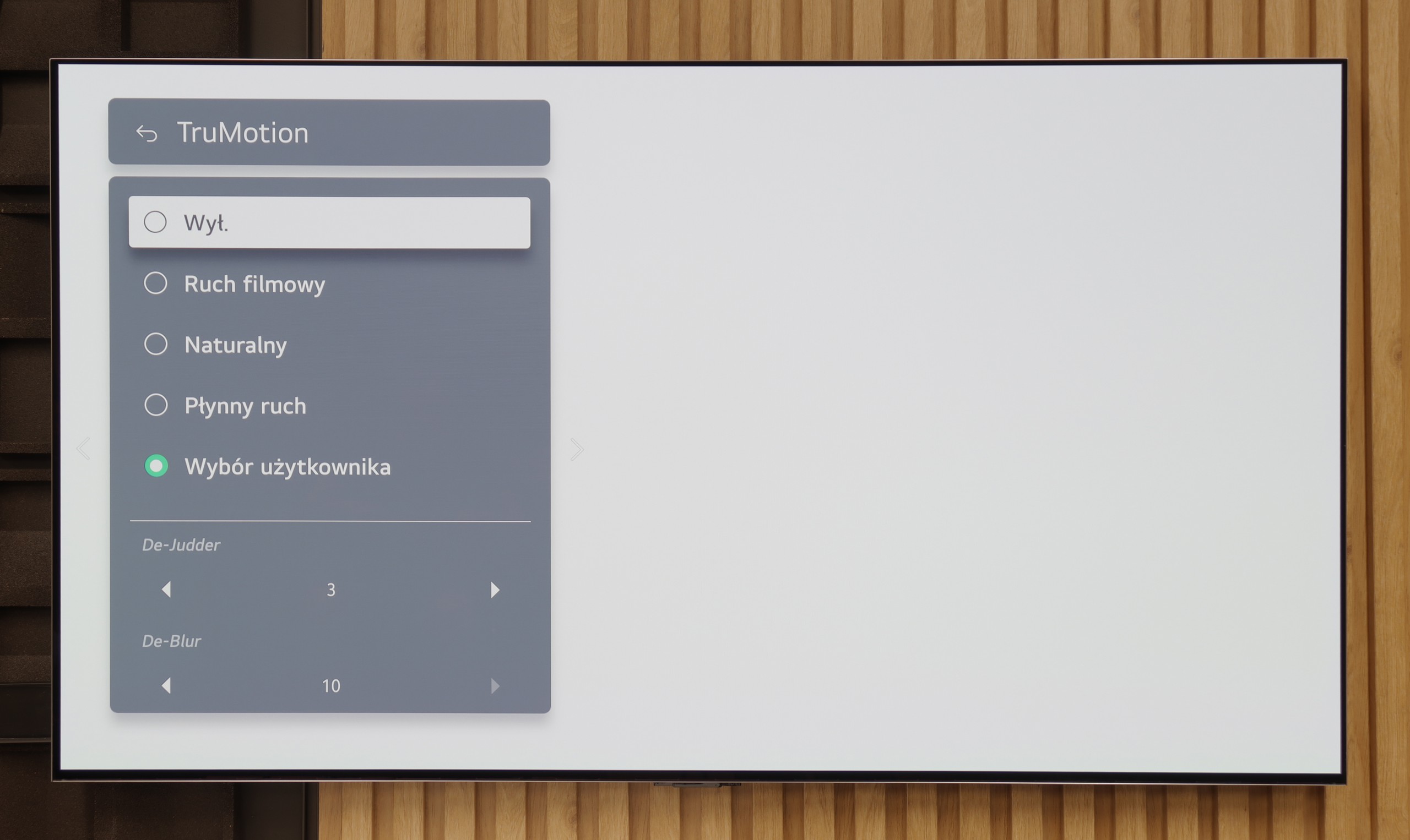
Blur (native resolution, maximum refresh rate):






Blur (BFI function enabled):
Image flickers in this mode
Image flickers in this mode



Smużenie (2160p 240Hz):



Smużenie (4K 165Hz):



Samsung QN900D is currently the fastest television in the world – literally. A refresh rate of 240 Hz in 4K resolution is an incredible value that PC gamers will surely appreciate. As for cinema fans, they will not be disappointed either – Samsung offers a 10-step clarity scale in the picture settings, allowing for image adjustments. We can choose whether the television should provide a smoother, theatrical effect at the highest settings, or a more cinematic experience, with visible frames, at the lowest settings.
The motion smoothness on the LG G5 is simply phenomenal. The television is equipped with a 165 Hz refresh rate panel, and this, combined with the instant response time of the OLED matrix, delivers incredible results. The image does not tear or stutter like on traditional LCD televisions. Like most LG models, the G5 is equipped with a motion smoother, which can be useful when watching films – we are, of course, referring to the TruMotion mode. With the "De-Blur" and "De-Judder" sliders, we can adjust the smoothness of older materials according to our own preferences, whether we want to maintain the characteristic film stuttering or lean towards a more fluid, television-like effect.
Console compatibility and gaming features
9.5/10
10/10
- ALLM
- VRR
- VRR range48 - 240Hz40 - 165Hz
- Dolby Vision Game Mode
- Correct implementation of HGIG
- 1080p@120Hz
- 1440p@120Hz
- 4K@120Hz
- Game bar

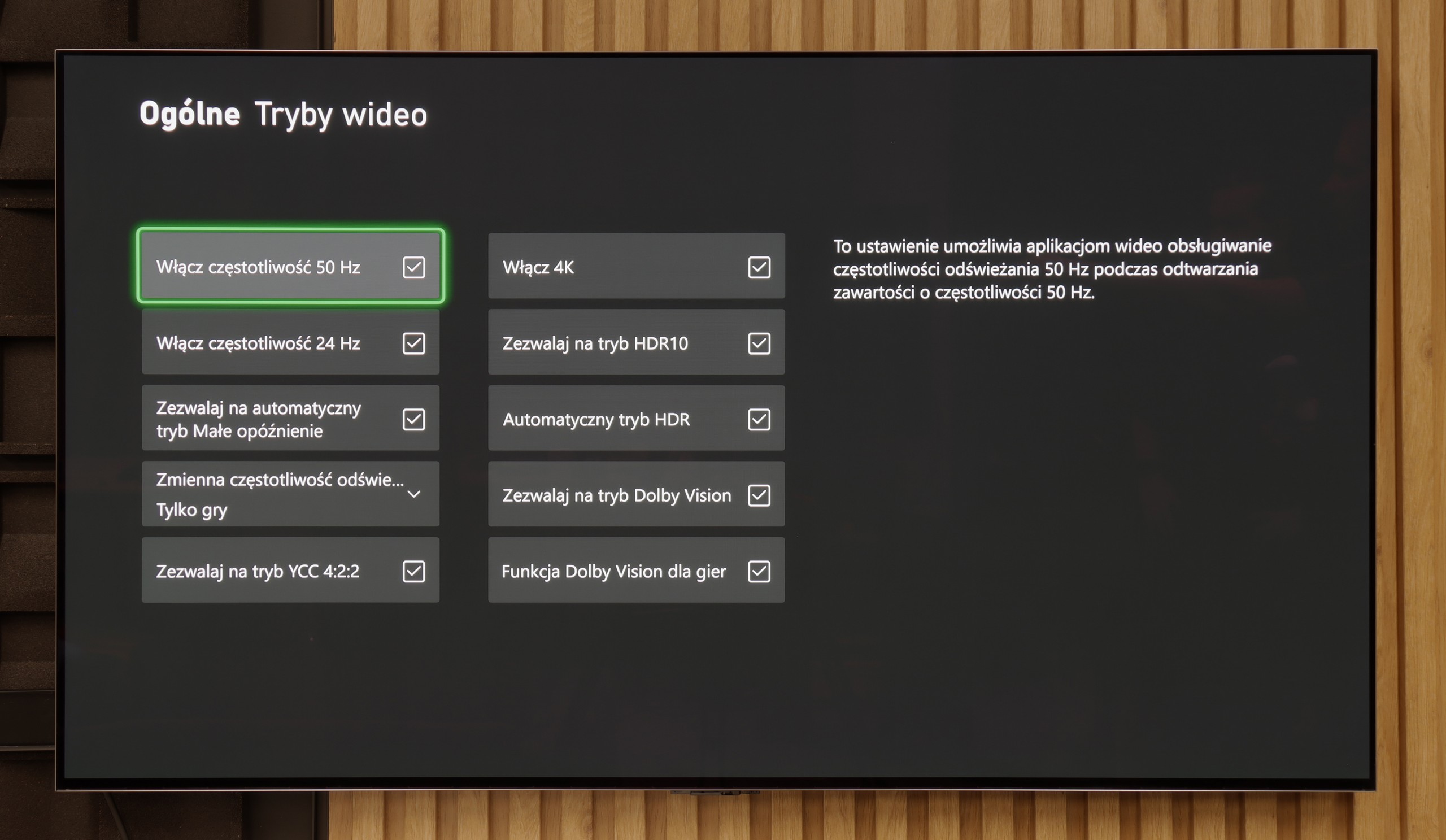

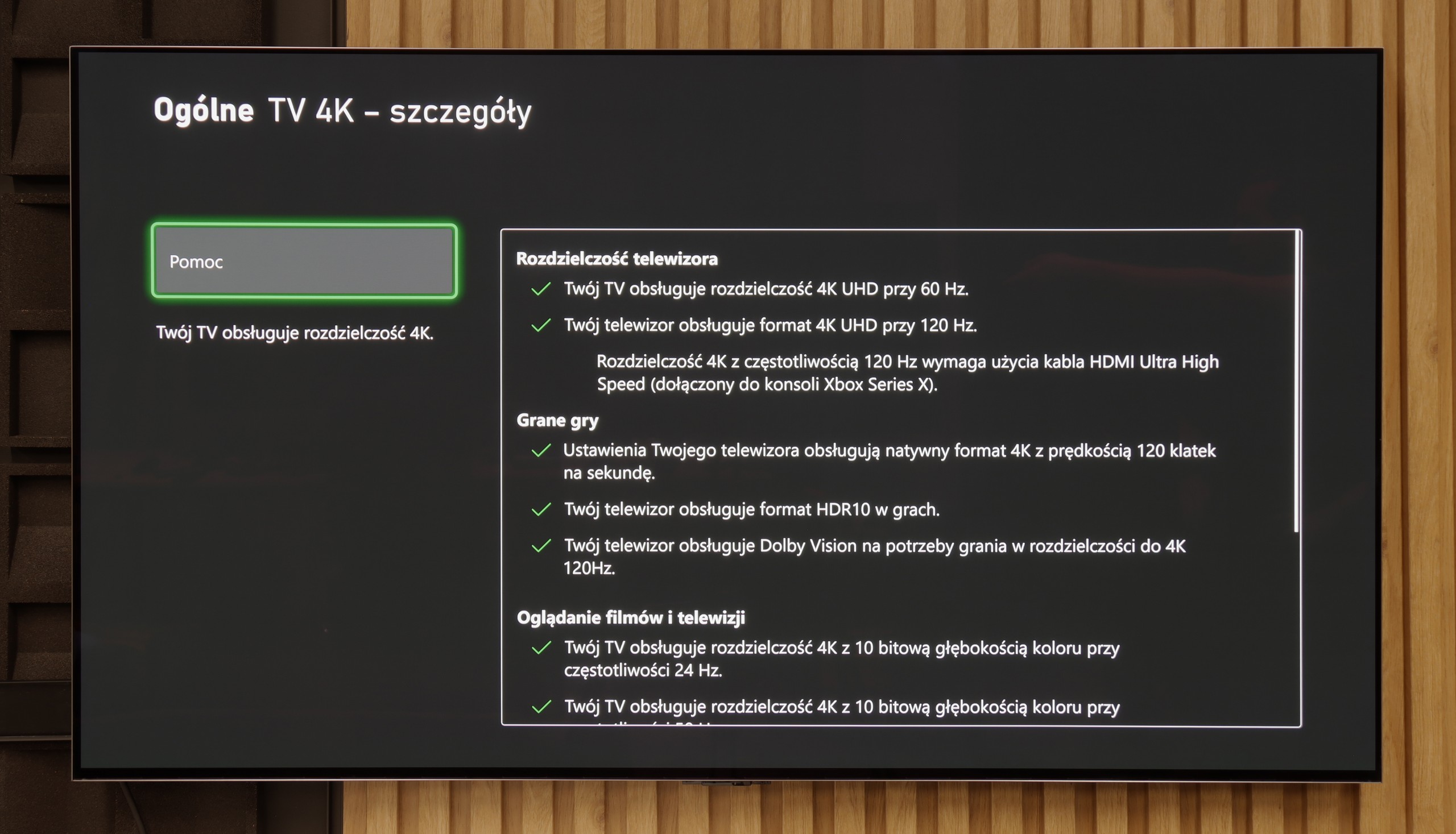

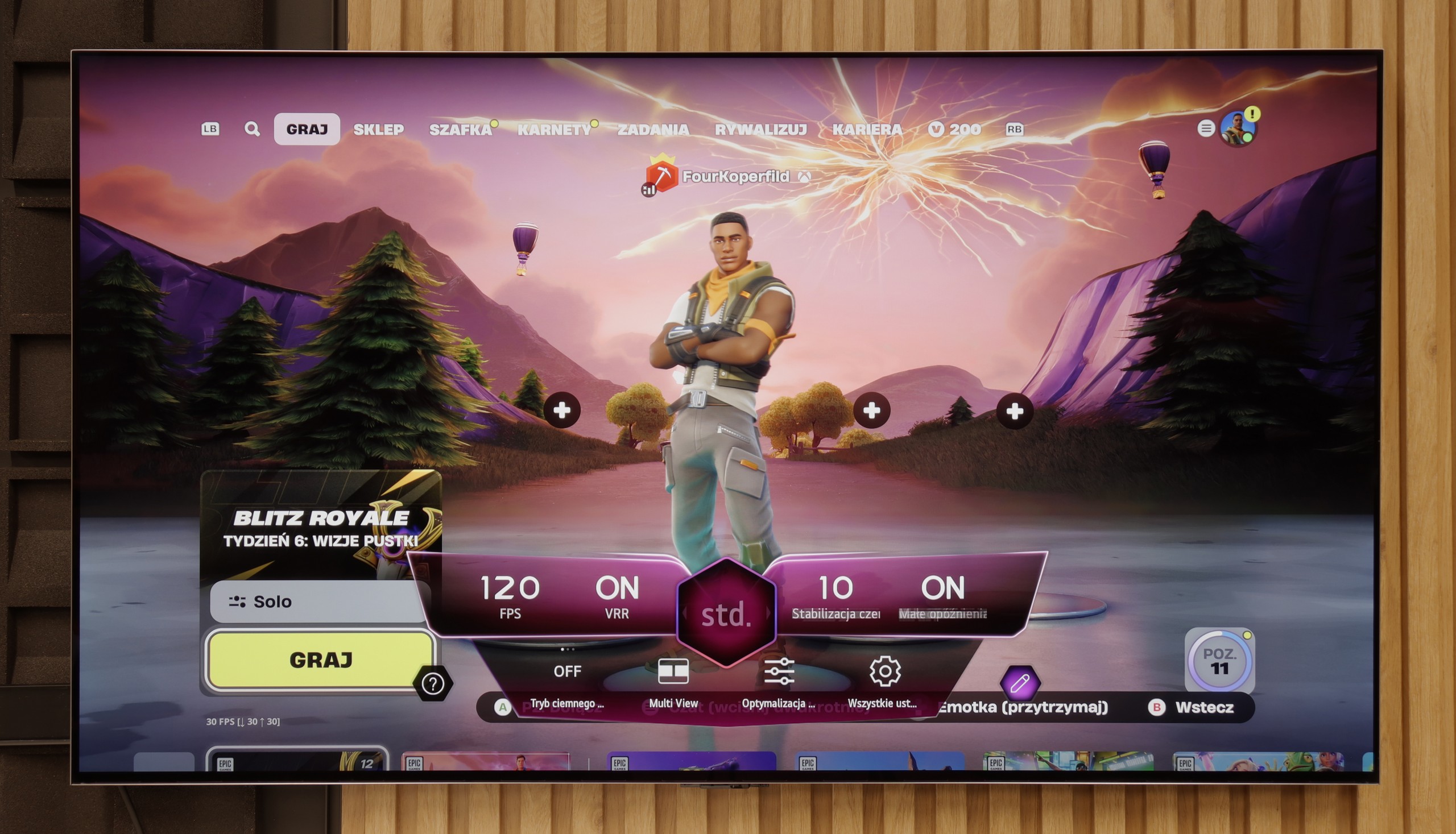

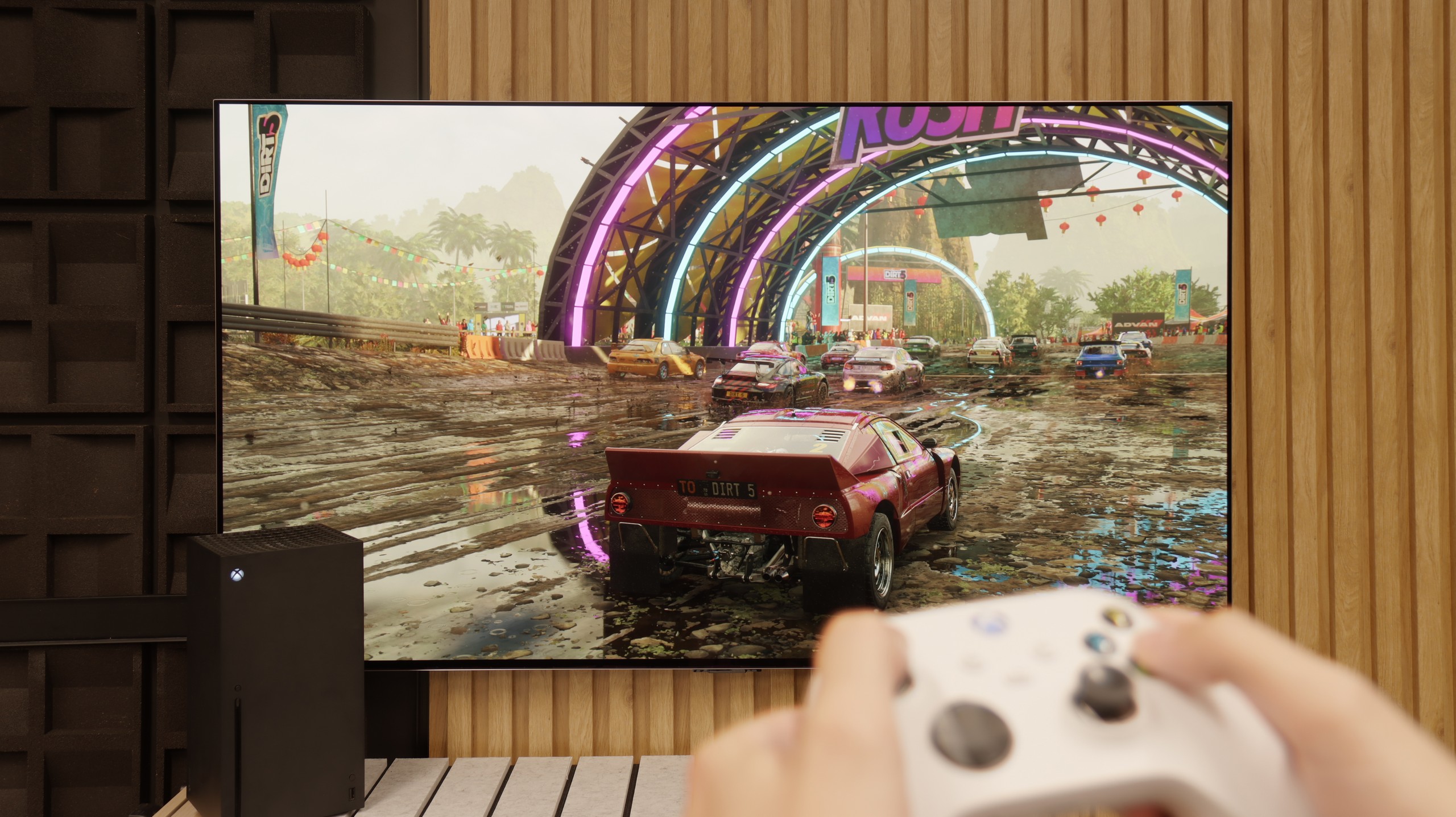
Samsung QN900D is a television that offers excellent compatibility with consoles and a range of features that gamers will appreciate. It has 4 HDMI 2.1 ports, although unfortunately without the full bandwidth of 48 Gb/s. Nevertheless, for the average user, this is more than sufficient. Additionally, the television supports Auto Low Latency Mode (ALLM) and Variable Refresh Rate (VRR), which means a smoother image and no screen tearing during dynamic gameplay. The G-Sync and FreeSync technologies also deserve attention, as they ensure optimal cooperation with consoles and computers equipped with the appropriate graphics cards, minimizing stuttering and providing a smooth image.
One of the unique features available only in Samsung televisions is the Xbox Game Pass app, which allows for game streaming without the need for a console. This is a very convenient solution that lets you enjoy your favourite games without the need to purchase additional hardware. Furthermore, the QN900D has a Game Bar – a special panel that enables quick access to game-related settings, making the configuration of game mode fast and intuitive.
Another interesting feature is a function called Auto Motion Plus Game, which is a special motion smoothing mode that can increase the frame rate (operating at a maximum for a 4K@60Hz signal). Importantly, this does not cause a significant increase in input lag, allowing the player to enjoy both greater image smoothness. All these features make the Samsung QN900D an excellent choice for those looking for a gaming television with the highest possible specifications.
Features for gamers? Perfect. That should be sufficient for you to know what level we are dealing with here. The G5 is a television designed with gamers in mind, so we will find literally everything you could expect from a gaming screen. There is a Game Bar, there is support for high resolutions with high refresh rates – that is, 4K at 120 Hz, and even more, as the panel has a refresh rate of 165 Hz (which PC gamers will benefit from). The television supports variable refresh rate (VRR), automatic low latency mode (ALLM), and also correctly handles HDR in games thanks to the HGiG function. All of this adds up to one of the best sets of gaming features available on the market. Well done, LG.
Input lag
9.8/10
9.9/10
SDR
HDR
Dolby Vision
When it comes to signal delay (input lag), Samsung QN900D achieves impressive results. Values below 15 ms are truly excellent, making the television an ideal choice for gamers expecting minimal delays during gameplay. The input lag at 8K resolution is also noteworthy, measuring just 17 ms – this is also a very good result that allows enjoyment of dynamic games at the highest possible resolution without noticeable delays.
The input lag on the LG G5 is incredibly low. The reaction time to our actions – whether we're playing with a controller, keyboard, or mouse – is almost perfect. The controls are instantaneous, and the game responds exactly when we expect it to. The Dolby Vision Gaming mode does introduce slightly higher latencies, but even then it's hard to nitpick – in the worst case, the values hover around 20 ms, which for most gamers will be practically unnoticeable.
Compatibility with PC
8/10
8.8/10

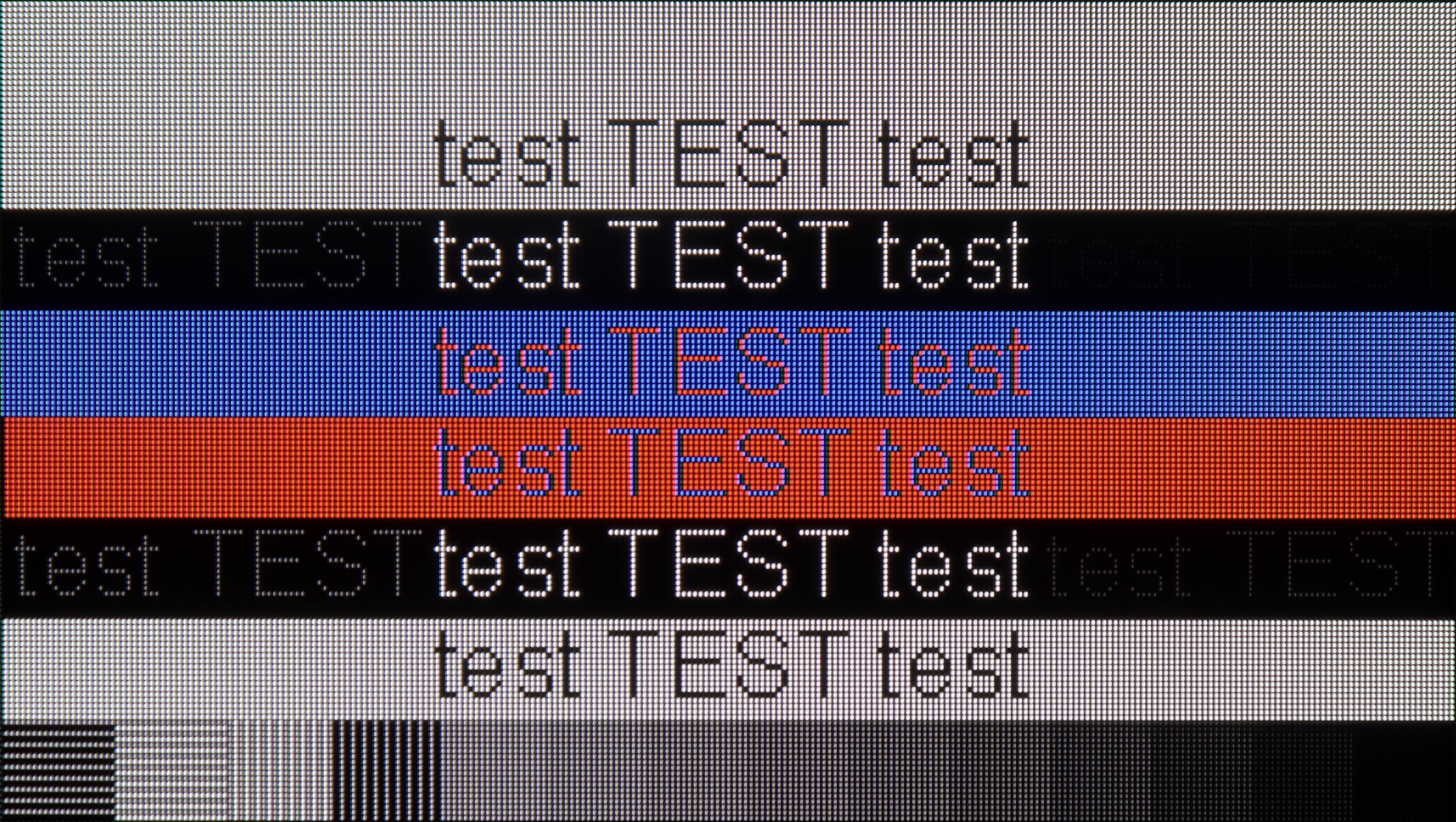
Samsung QN900D offers very good compatibility with computers, making it an excellent choice for users looking for a large screen for work and entertainment. It supports full colour reproduction with Chroma 4:4:4, resulting in better image quality when using text and office applications. The readability of fonts is quite good, especially considering the 8K resolution, which offers an enormous level of detail.
Unfortunately, despite the very high resolution, the television has some issues with bright fonts on a dark background – slight shadows created by subpixels can be noticed. This may not be a key issue, but for more demanding users, it could affect the comfort of use, particularly when working in text applications. Nevertheless, the overall image quality and compatibility with computers are at a high level. It is also worth praising the television for supporting 240Hz at lower resolutions like 4K. This allows high-end PCs to showcase their prowess in gaming.
Collaboration with a PC? Nearly perfect. The television, as we mentioned earlier, has fantastic features for gamers – including those using a PC. Onboard, we find full G-Sync certification, a 165 Hz panel, and a super-fast input lag of around 5 ms. Thanks to the correct implementation of chroma 4:4:4, fonts are very easy to read – both the smallest and the largest. Although due to the WRGB subpixel layout, there may be slight shadows around the characters, for most users this effect will be virtually unnoticeable. The G5 excels as a screen for work, entertainment, and gaming – also from a computer.
Viewing angles
7.8/10
7.5/10
The viewing angles on the QN900D television are very good, despite the use of a VA panel. Thanks to a special coating that broadens the viewing angles, the picture remains flawless even when viewed at an angle. This is particularly important when there are more people in the room – every viewer, regardless of their seating position, can enjoy excellent picture quality, without distortion or loss of colours. This makes the Samsung QN900D a great choice for watching both films and sports broadcasts with a larger group.
The viewing angles on the LG G5 are very good, mainly due to the use of a WOLED panel. It's hard to find fault here – the image does not significantly lose brightness or quality even when viewed from the side. However, it should be fairly noted that there is a slight regression compared to the G4 model. The predecessor used an MLA panel with micro-lenses, which offered slightly better light distribution. Also, compared to QD-OLED panels, the angles are worse. Nevertheless, the overall perception of the image at an angle remains very good and should not be an issue in everyday use.
TV efficiency during daytime
5/10
8/10

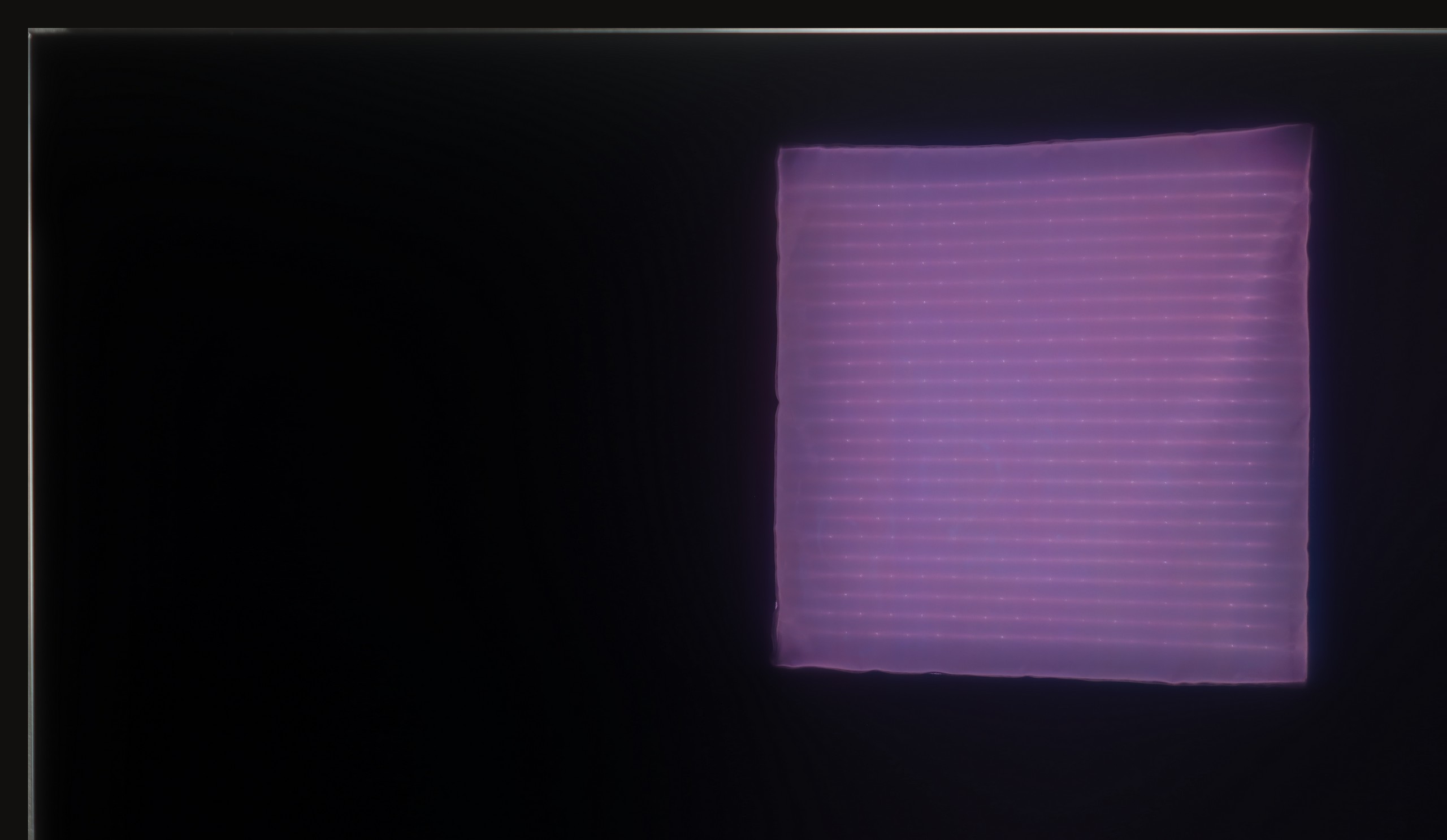


Matrix brightness
Average luminance SDR
LG OLED G5: 810 cd/m2
Samsung QN900D Neo QLED 8K: 387 cd/m2
When it comes to the performance of the Samsung QN900D television in daylight conditions, it is generally average. The television has a special anti-reflective coating that helps reduce glare; however, due to the VA panel and the layer that widens the viewing angles, light reflections are heavily scattered horizontally - resembling the colours of a rainbow. This results in a loss of image vibrancy, especially in bright rooms where intense light sources can negatively affect the quality of the displayed image.
The LG G5, thanks to its very high brightness, performs excellently in bright rooms. Even with SDR content, the average brightness value is around 800 nits, which is significantly more than in standard televisions. It will handle a bright living room with ease. Although the panel averages moderate reflection suppression, it still maintains significantly better blacks and colours during the day than QD-OLED panels or those with a matte finish. The G5 will perform well in very sunny rooms – unless you truly cannot stand reflections on the screen. In that case, you will need to use blinds or consider purchasing a television with a matte panel.
Details about the matrix
Subpixel Structure:

Panel uniformity and thermal imaging:


TV features
7.4/10
8.5/10
- HDMI inputs0 x HDMI 2.0, 4 x HDMI 2.1 40Gbps0 x HDMI 2.0, 4 x HDMI 2.1 48Gbps
- Other inputsIR (remote)
- OutputsToslink (Optical audio), eARC (HDMI), ARC (HDMI)Toslink (Optical audio), eARC (HDMI), ARC (HDMI)
- Network InterfacesWi-Fi 2.4GHz, Wi-Fi 5GHz, Ethernet (LAN) 100MbpsWi-Fi 2.4GHz, Wi-Fi 5GHz, Ethernet (LAN) 100Mbps
- TV receptionDVB-T, DVB-T2, DVB-S, DVB-S2, DVB-CDVB-T, DVB-T2, DVB-S, DVB-S2, DVB-C
Classic features:
- Recording to USB (terrestrial TV)
- Recording programming
- Picture in Picture (PiP)
- RF remote control (no need to aim at the screen)
- Backlit remote control
- Teletext
- Audio only mode
- Possibility to connect Bluetooth headphones to the TV
- Possibility to simultaneously use Bluetooth headphones and the TV speaker
Smart features:
- AirPlay
- Screen mirroring (Windows Miracast)
- Wyszukiwanie głosowe
- Voice search in native language
- Ability to connect a keyboard and mouse


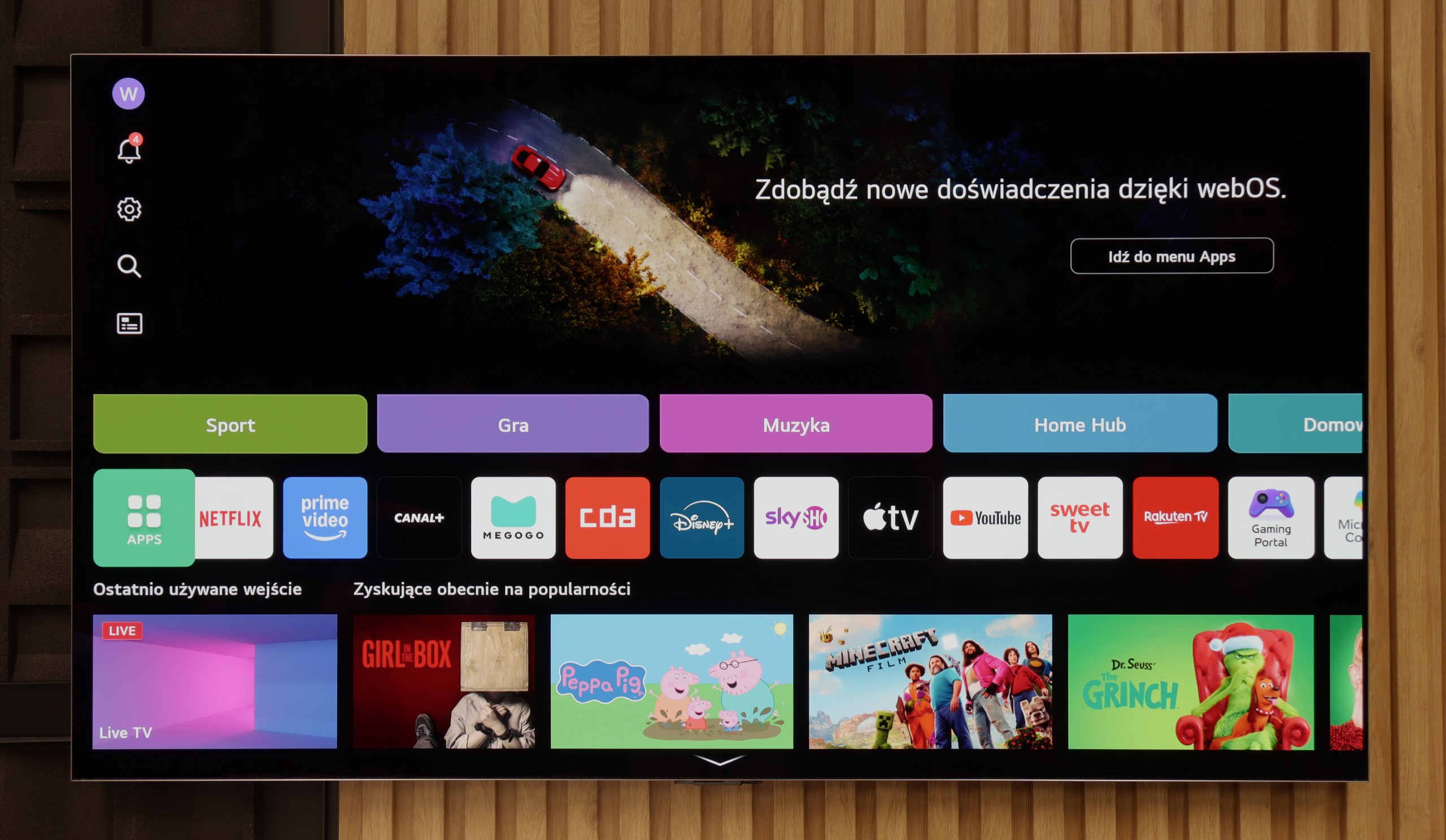
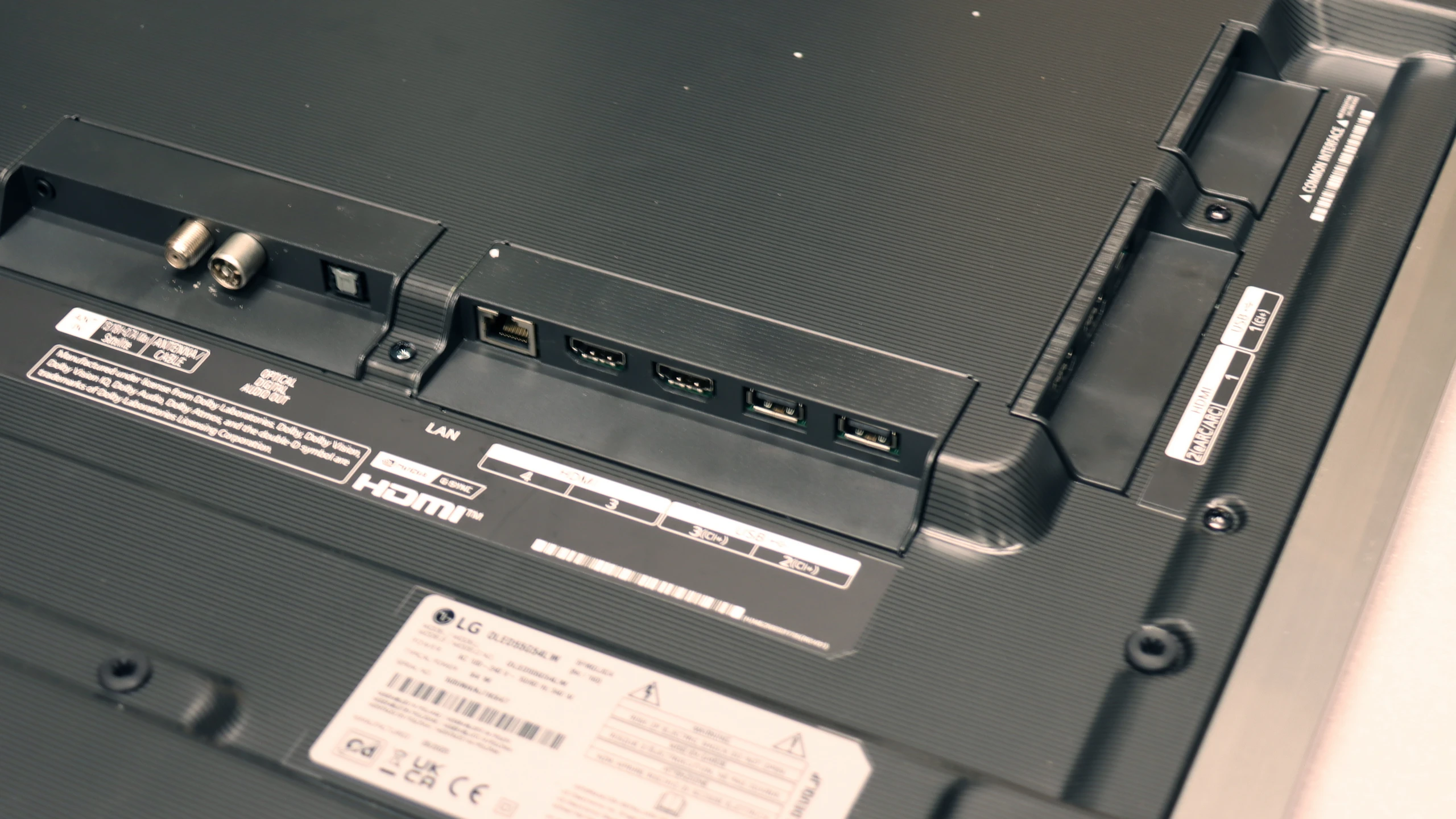
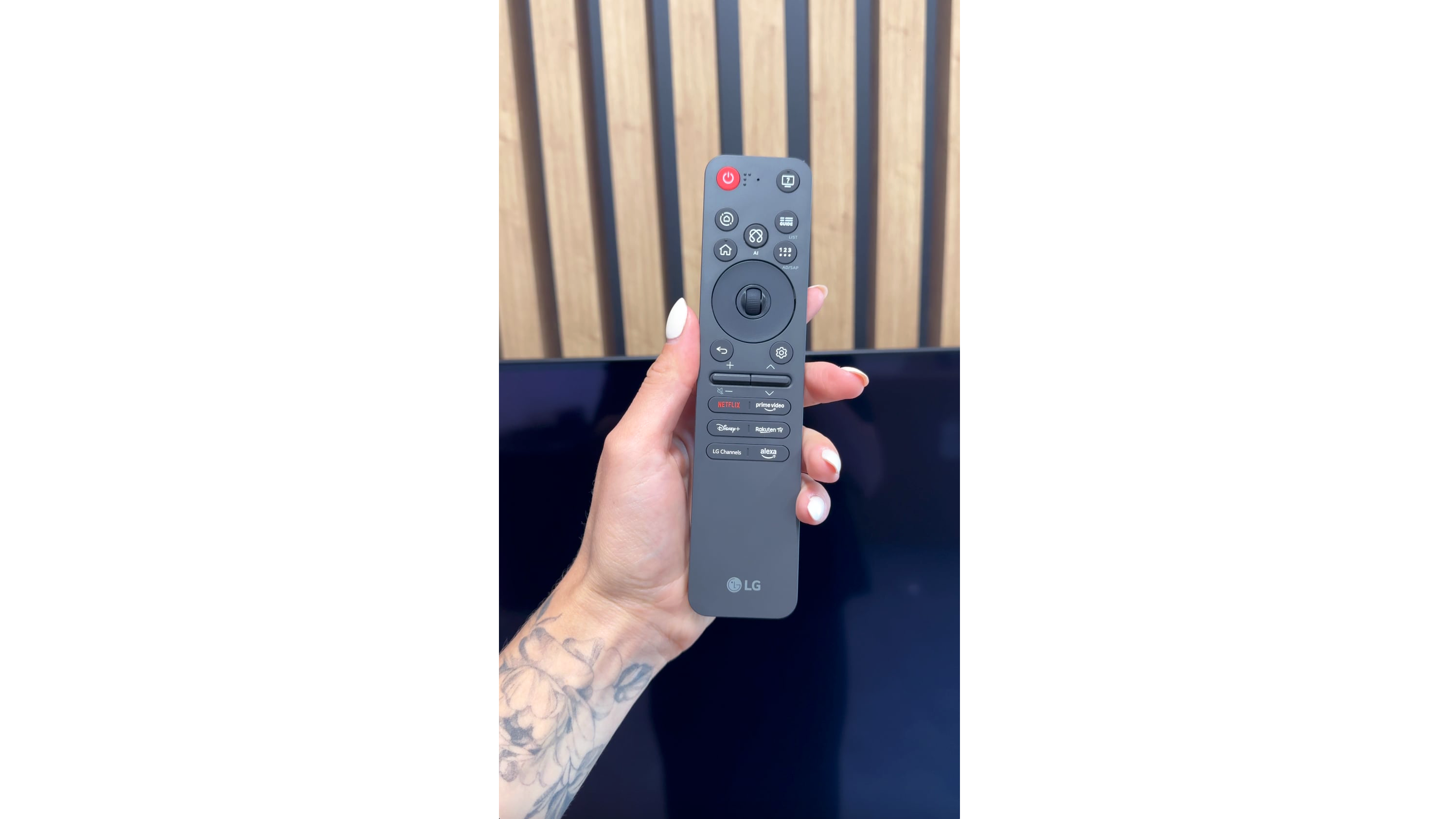
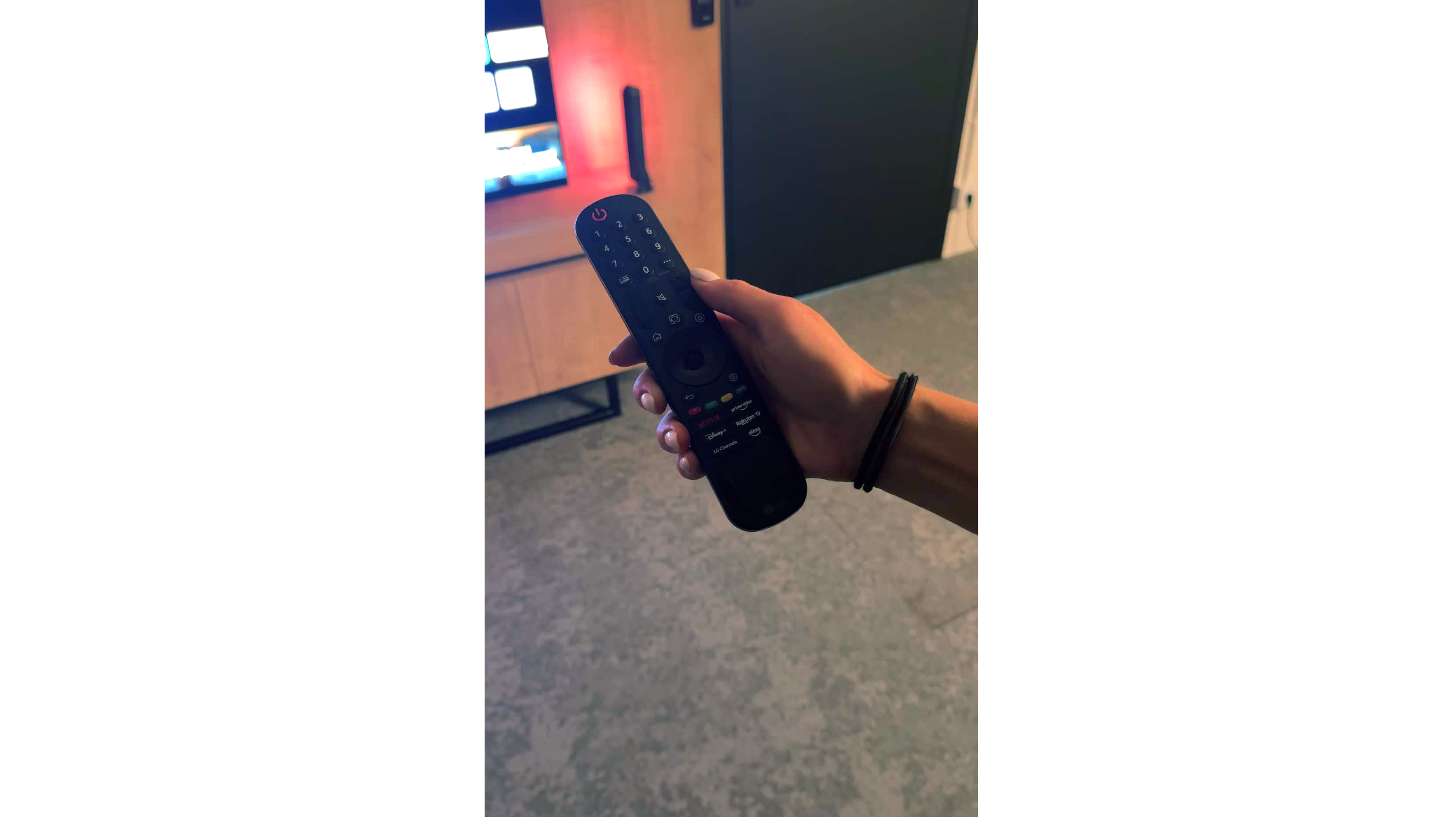
The Tizen system that powers the Samsung QN900D television offers excellent integration with other devices, allowing for convenient use of numerous applications, including AirPlay. Users also have the option to control other equipment via the SmartThings app. The television also works with lighting systems such as Philips Hue, enabling the creation of a moody atmosphere during film screenings.
In everyday use, the QN900D performs exceptionally well. The solar remote can control other devices, such as set-top boxes, making the lack of recording functionality less of an issue. Additionally, the television features a Picture-in-Picture (PiP) function, and with its 8K resolution, it is even possible to split the screen into four parts, making it exceptionally functional and useful for watching multiple programmes simultaneously as well as for effective work with various image sources.
The Samsung QN900D also stands out with its modern appearance. Its slim profile makes it the thinnest Mini LED television on the market, and the use of the One Connect module allows for neat cable management, so the area around the television looks tidy and elegant. The central stand adds lightness and creates the impression that the television is floating in the air, giving it a unique character. Additionally, the Ambient Mode feature allows for the display of decorative graphics or the adjustment of the image to fit the interior, making the television an integral part of the room, even when it is switched off.
Classic features
LG G5 has a lot to offer when it comes to classic television features. Aside from the inability to watch two sources (PIP), the television handles everyday usage excellently. There are no issues connecting external Bluetooth devices, such as headphones, and the EPG interface is very clear and understandable – even for those who are not particularly tech-savvy.
Smart TV Features
The Smart TV in the G5 operates on the WebOS system – it is the heart and brain of the entire television. With the Magic remote, using the G5 is truly enjoyable. We control the cursor on the screen with wrist movements, which somewhat resembles using a mouse in the air. The system itself is highly developed and offers everything one could expect: AirPlay, screen mirroring, voice search, and voice commands – all of this works smoothly and without delays. Without a doubt, it is one of the best operating systems in televisions on the market.
Note:
During our tests, we had virtually nothing to complain about – perhaps with one exception: the confusion surrounding the remote. Depending on the market and the specific version of the model, you may encounter the new, minimalist Magic remote (without a numeric keypad) or the older version with a full set of buttons. We tested the G54LW model, which came with the new Magic remote, but it's hard to say how the situation looks in other variants. It may be a similar situation to the LG C5 series, where the addition of the remote also depends on the specific market.
Playing files from USB
9.2/10
9/10
Supported photo formats:
Maximum photo resolution:

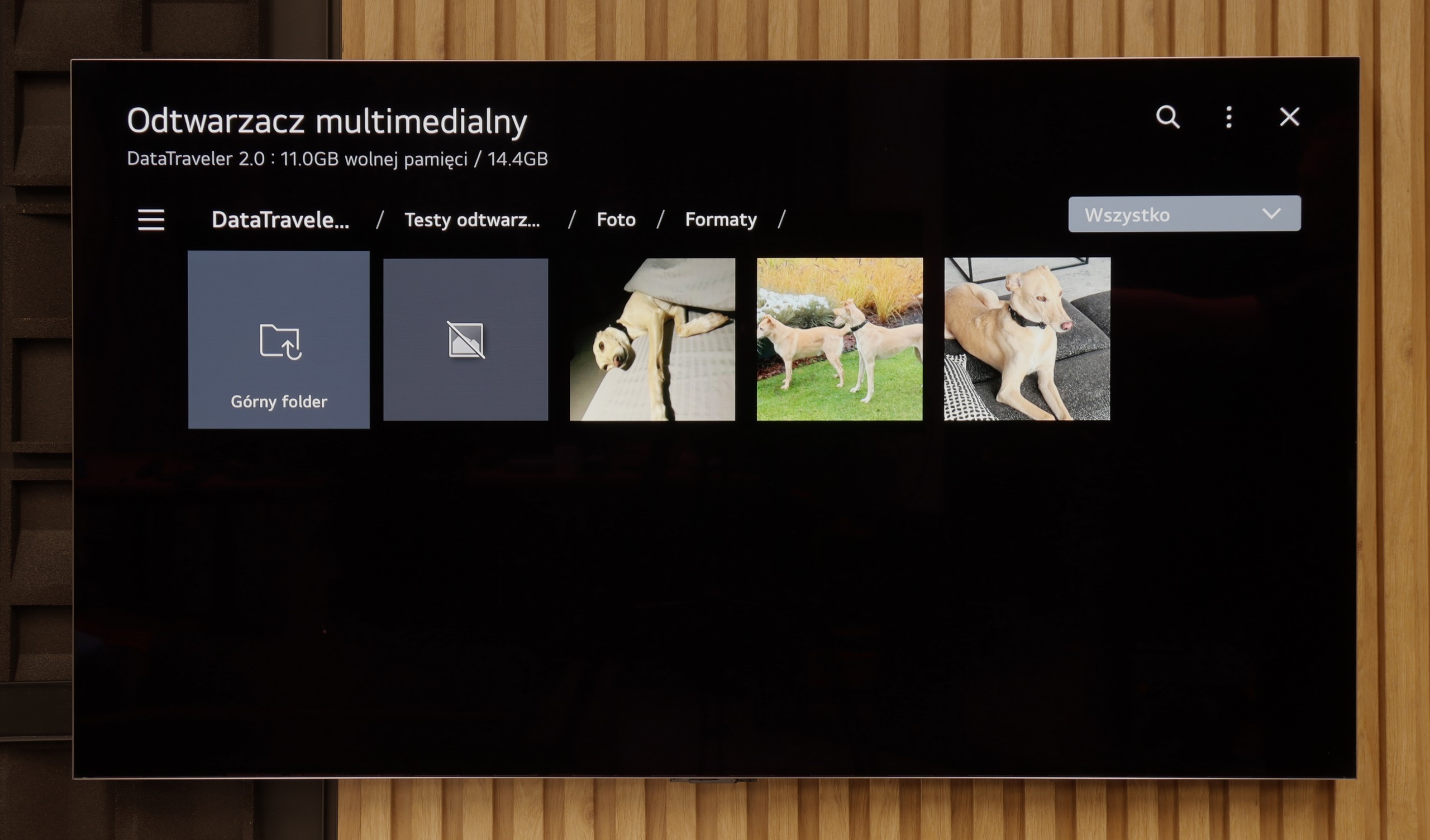
QN900D Samsung plays most popular video and audio formats without any issues. The resolution of images is also not a challenge for it; however, the television has difficulty opening less common image formats, including Apple's HEIC format.
The built-in media player in the LG G5 is really very good. It supports practically everything you might expect from a modern television – most popular formats work without any issues, and the app's performance is swift. Our only disappointment was the lack of support for very high bitrate HEVC 85 Mbit/s files – similar to the C5 and B5 models. Interestingly, the same file played flawlessly on last year's LG OLEDs, so it's hard to say what has caused this change. Nevertheless, in everyday use, the G5 will handle the vast majority of content without the need to connect any external devices for media playback.
Apps
8.7/10
9.1/10














































Sound
7.4/10
8.7/10
- Maximum volume--
- Dolby Digital Plus 7.1
- Dolby True HD 7.1
- Dolby Atmos in Dolby Digital Plus (JOC)
- Dolby Atmos in Dolby True HD
- DTS:X in DTS-HD MA
- DTS-HD Master Audio
Television Samsung QN900D, equipped with an audio system with a power of 90 W in a 6.2.4 channel configuration. Despite its slim casing, the sound is clear and spacious, which is further supported by Dolby Atmos technology, providing immersive audio experiences. Unfortunately, like many other Samsung televisions, the QN900D does not support audio tracks in DTS format, which may be significant for home cinema users.
The sound on the LG G5, considering its slim profile, is truly phenomenal. When listening to music, one can feel a light, pleasant bass, and in films, the dialogue is clear and audible – it does not get lost even in dynamic scenes. Unfortunately, a certain disappointment is the lack of support for the DTS format, which LG used in its older models. It’s a shame, as many home cinema enthusiasts may feel this as a step backwards.


